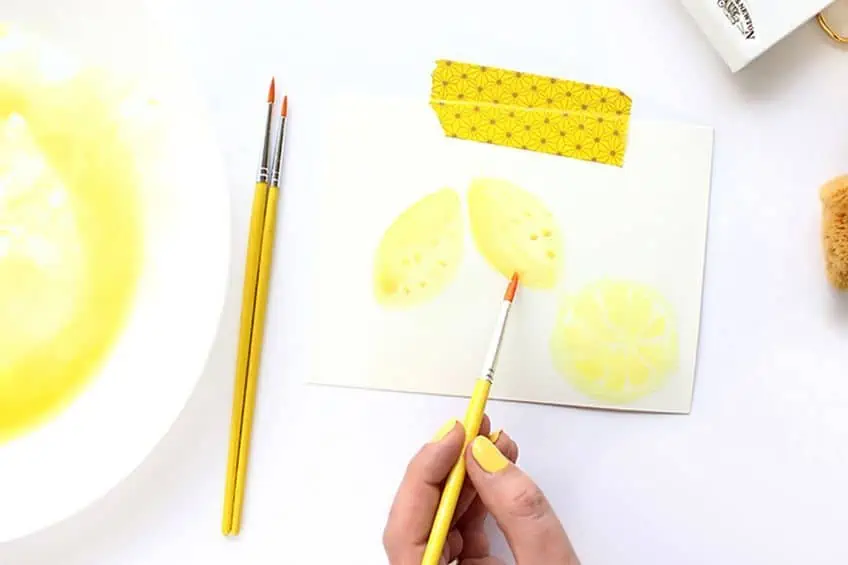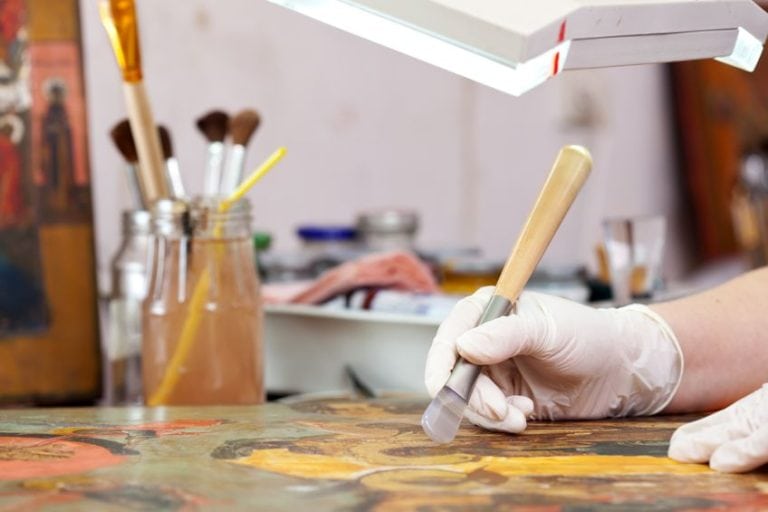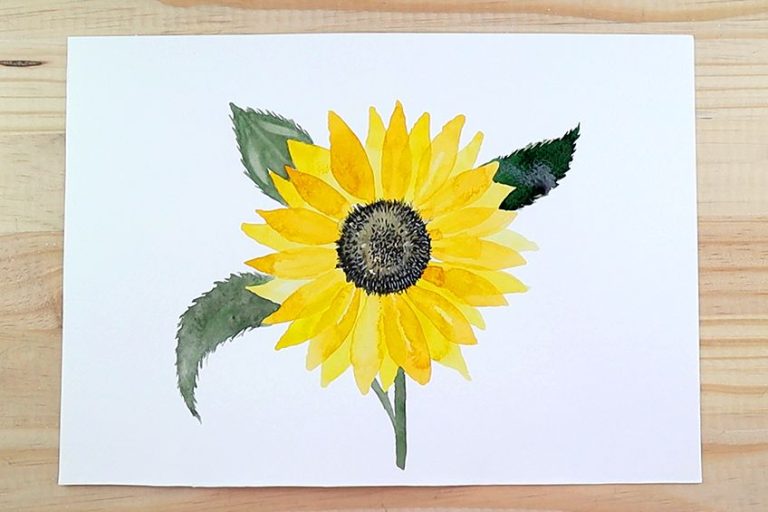What Is Bristol Paper? – The Versatility of Strathmore Bristol Paper
This post may contain affiliate links. We may earn a small commission from purchases made through them, at no additional cost to you.
Some only use paper for printing, and others who are only beginning to paint or draw, might not be aware of the many different types of paper out there. They might also not understand the importance of using the correct paper for each medium. A lot of frustration can be avoided by making sure the best paper is used in every circumstance. For example, there is a paper that is best for oil paints, watercolors, pastels, as well as multi-media paper. What is Bristol paper used for? How many different types are there? Answering these questions is what we will be focusing on in this article.
Table of Contents
What Is Bristol Paper?
Bristol paper is formed by pasting together multiple layers of paper under pressure, so it is machine-finished and uncoated. Some might also mention Bristol board, both the paper and the board are the same product and could be better defined as Bristol board paper. You can get Bristol board paper that is two-ply, three-ply, or four-ply, which is an indication of the number of paper layers. When comparing these different types of Bristol paper, the paper with three to four layers will be thicker and sturdier.

Some say the paper is named after the English town known as Bristol. This is true in a way, as the paper was named after a person, Frederick Hervey, who was the Earl of Bristol. It is also mentioned that European mills would send their best paper to Bristol in England for the pasting process. The paper is quite heavy and is similar to cardstock, which provides a stiff and strong surface to work on. The Bristol paper texture is smooth, however, there are two main types which we will be discussing below. You can easily get Bristol paper pads, Bristol sketchbook products as well as single sheets and rolls of Bristol paper.
The Two Main Types of Bristol Paper
Bristol board paper is made in two finishes, these are smooth and vellum. These two finishes are perfect for all kinds of dry as well as wet media. This makes Bristol paper a great surface for things like mixed media art as well as collages. However, it is also good for those who only wish to use a single medium. The smooth surface finish is excellent for ink and pen drawings, and airbrushing markers, and pencils. There is little to no tooth or texture, which is why it is best suited for more detailed orientated drawings, and for creating fine lines.
The vellum surface is best suited to pastels, oil pastels, crayons, colored pencils, and graphite.
There is some texture or tooth, which helps grab onto things like the graphite. There are also two more finishes that some brands offer. Strathmore is the brand that stands out most for the best Bristol paper.
- Semi-Smooth Bristol Paper: This paper is somewhere between the smooth and rougher texture. There is only a very slight texture, which makes it great for pencils, markers, pens, and ink
- Plate Bristol Paper: This is an extremely smooth and even finish, that is achieved using a particular process using steel rollers and immense pressure. This type of surface is great for markers, ink, air-brushing as well as mechanical layouts.
Bristol board paper has various thicknesses as mentioned above, from two-ply to four-ply. The two-ply is similar to cardstock, while the three and four-ply are even more rigid. The Bristol paper pad can also be sold by weight, which represents the total weight measured for 500 sheets of the specific paper. A well-known and popular brand is the 100-pound or 270 grams Strathmore Bristol paper.
Comparing Bristol Paper to Illustration Boards
Is a Bristol sketchbook or pad the same as illustration boards? The difference between the illustration board and the Bristol paper board is in the design. Bristol board can be used on both sides, while illustration board is paper that has been mounted onto a heavyweight board, making it stronger and more rigid. The Illustration board is usually only workable on one side.
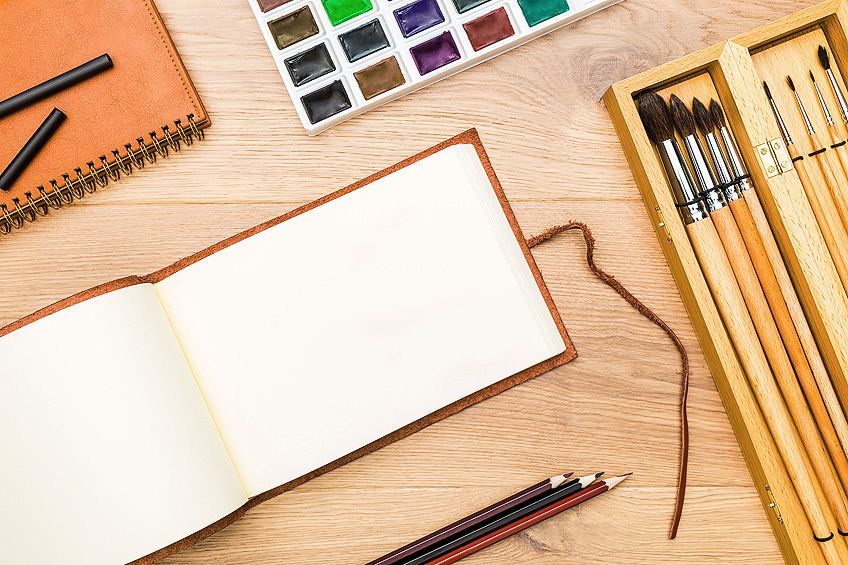
The Illustration board comes in different sizes and thicknesses, and you can also get archival quality boards that are acid-free. The boards also come in hot and cold-pressed varieties, offering smooth and more textured surfaces. The textured surface can be used with airbrushes, pens, ink, pencil, and light watercolors. The sturdy surface is unlikely to warp or bend. Illustration boards are used more for finished art pieces, which makes them a little more expensive than the Bristol board.
Bristol board is generally more lightweight when compared to illustration board and is used for art pieces that you want to preserve. In some cases, an illustration board can be used for creating artwork that will later be reproduced on another type of media.
| Bristol Board Paper | Illustration Board | |
| Cost | Less expensive | More expensive |
| Design | Two workable surfaces | Single workable surface |
| Uses | Creating details and fine lines. The textured surface is good for graphite, charcoal, pastel, and colored pencils | Pen, ink, pencil, watercolor, any media that requires a rigid surface |
| Archival qualities | Choose high-quality paper with archival properties | Needs to be 100 % rag. Always check, not all boards are archival or acid-free |
What Is Bristol Paper Used For?
Bristol board paper is used a lot in the printing of promotional materials and can be found in paperback books as well as tickets or tags. Because of its sturdiness, the paper board can also be used in scale models as a wall. The thicker boards can also be used to create 3-D models. The most popular of the Bristol boards are the two and three-ply varieties. The thinner paper is mostly used for publications or printing, while the thicker paper is used more for finished works. More uses and areas where you can find Bristol board paper include the following:
- Illustration projects
- Technical drawings
- Comic book drawings
- Postcards
- Wedding invitations
- Mixed media
- Smooth finish is great for pen and ink applications, those that require finer details
- The rougher finish is good for graphite, chalk, crayons, colored pencil, and charcoal
The Bristol paper can handle all dry media; however, the thicker varieties may be able to handle light washes of watercolor paints. Always purchase high-quality paper products and check to see if the paper board is archival. When using watercolors, even acrylics on Bristol board, a primer is not necessary. However, if you do attempt using oil paints, then you should apply at least three layers of acrylic gesso or a fluid matte medium. This barrier helps prevent the oils from being absorbed into the surface. When it comes to painting with any of the wet mediums, it is best to choose the proper surface to work on if you want to achieve longevity and produce the best results.
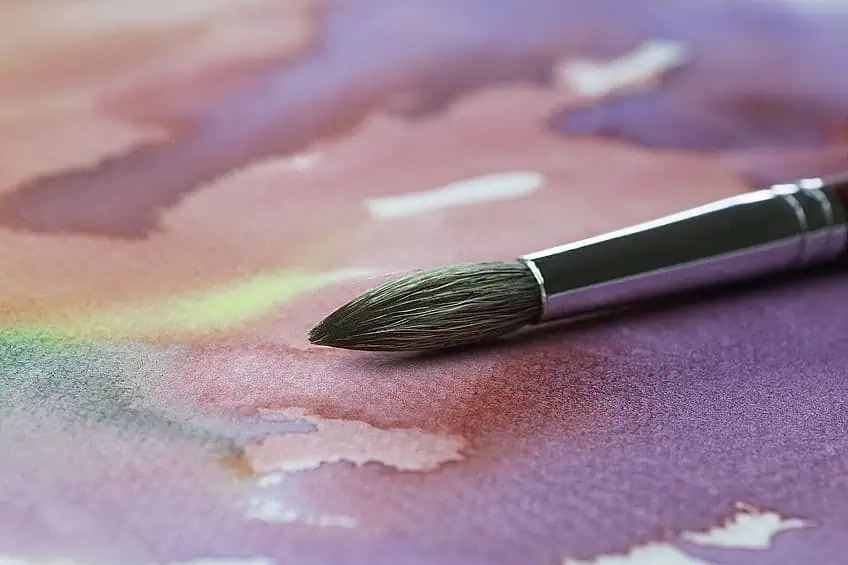
The main advantage of Bristol paper versus your drawing paper is its sturdy surface. When applying thin layers of paint, it should not warp at the edges. A disadvantage is that the watercolor paints or other wet media might bleed through the smoother, thinner Bristol paper options. Some artists like using watercolor on Bristol paper that is smoother, the trick is not to go over areas too much and add too much water. If you do decide to use watercolors on the Bristol board, always test the paint out on a small section to see if it will bleed through. The thicker paper that has a little more texture is a better option for watercolor on Bristol, as it absorbs better.
Whether you are using a Bristol sketchbook or Bristol paper pad, it is a great drawing paper to use for a variety of art projects. Perfect for detailed drawings and using pens, inks, and markers. However, many artists also love using Bristol board paper for watercolor and acrylic painting. So, if you are on the lookout for a good versatile paper board for your next project, consider trying Bristol paper.
Frequently Asked Questions
Is There a Difference Between Vellum and Bristol Paper?
Bristol paper is generally a smooth paper and is used for detailed drawings. The Bristol vellum is not the same as the drafting paper vellum, which is more translucent. The Bristol vellum is a rough paper, similar to the cold-pressed watercolor paper that has more “tooth” than the smooth Bristol paper. So, there is more than one Bristol paper texture.
What Brands of Bristol Paper are There?
The most well-known and easily available brand is Strathmore Bristol paper. However, you can also get Bristol paper from Canson, Koh-I-Noor, Neenah amongst others.
Can Bristol Paper and Watercolor Paints Work Together?
It is always best to use watercolor paper, however, many artists enjoy using watercolor on Bristol paper. You can choose to paint on the smooth Bristol paper, but the paint will likely bleed through the paper. Try using a thicker Bristol vellum paper instead as this has more texture.
Can Oil Pastels Be Used On Bristol Paper?
Many artists find that oil pastels work great on smooth Bristol paper. Not only that, but the easily portable cardstock is a nice size to work with.
In 2005, Charlene completed her wellness degrees in therapeutic aromatherapy and reflexology at the International School of Reflexology and Meridian Therapy. She worked for a company offering corporate wellness programs for several years before opening her own therapy practice. In 2015, she was asked by a digital marketer friend to join her company as a content creator, and it was here that she discovered her enthusiasm for writing. Since entering the world of content creation, she has gained a lot of experience over the years writing about various topics such as beauty, health, wellness, travel, crafting, and much more. Due to various circumstances, she had to give up her therapy practice and now works as a freelance writer. Since she is a very creative person and as a balance to writing likes to be active in various areas of art and crafts, the activity at acrylgiessen.com is perfect for her to contribute their knowledge and experience in various creative topics.
Learn more about Charlene Lewis and about us.
